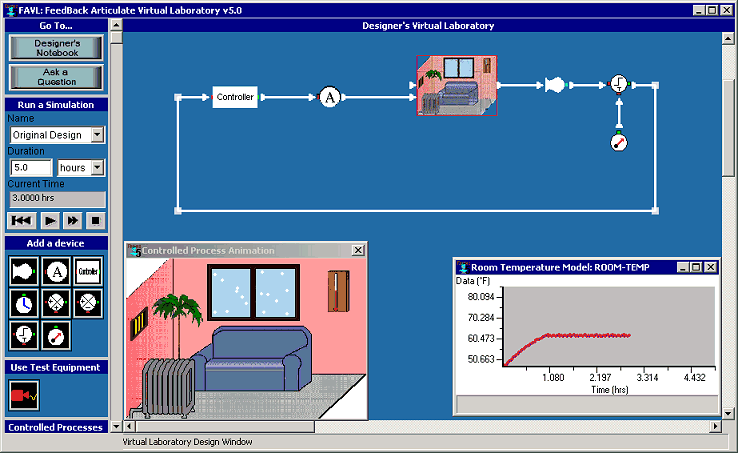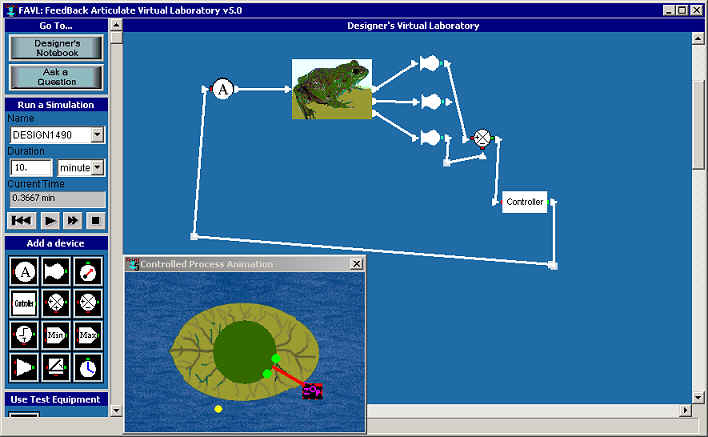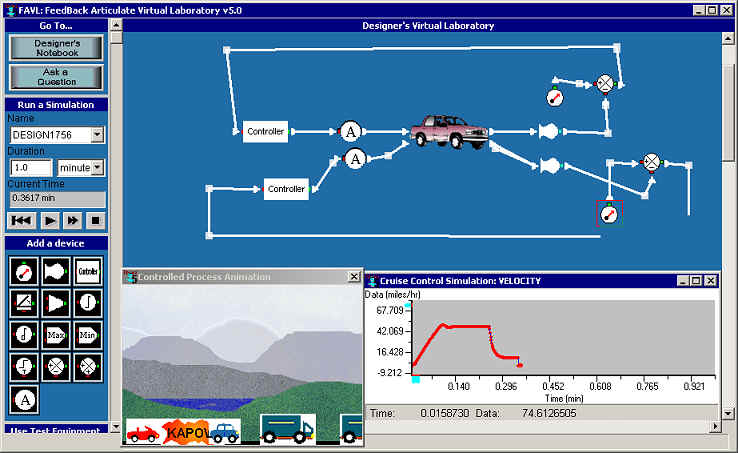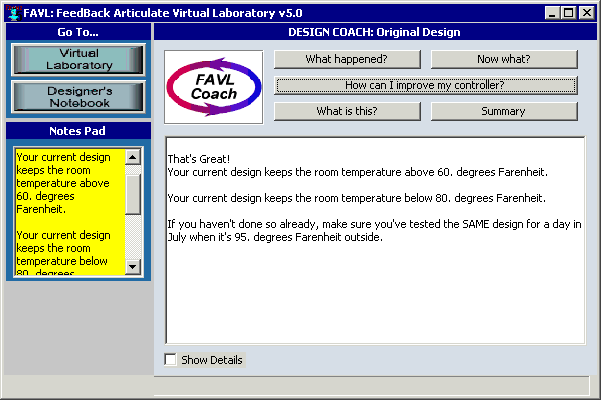

Feedback Articulate Virtual Laboratory
Project
Director: Kenneth Forbus
Curriculum Development:
Joyce Ma
Technology Design: Kenneth Forbus, Leo Ureel, and Joyce Ma
Feedback control is a pervasive and powerful concept that engineers have applied to design and analyze devices and processes, such as satellite attitude control, and that scientists have used to study natural phenomena, such as regulation in the human body and ecological balance. Yet, traditionally, students first encounter feedback control theory in college courses where it is typically taught using mathematics that is more advanced than what most high school students study (i.e., calculus, LaPlace transforms, complex analysis).
FAVL, the Feedback Articulate Virtual Laboratory, is a computer-based learning environment designed to help students understand the concept of feedback control in engineering design and in natural phenomena without the often higher-level mathematical treatment it is given in college courses. The environment consists of a virtual design space and associated activities in which students can construct different feedback control systems and simulate their dynamic behavior. Figure-1, Figure-2, and Figure-3 show, respectively, a room temperature control, an object tracking, and a collision avoidance system designed in FAVL.

Figure-1 Screen Shot of a Room Temperature Control System Designed in FAVL.

Figure-2 Screen Shot of an Automatic Object Tracking System Designed in FAVL

Figure-3 Screen Shot of an Automatic Collision Avoidance System Designed in FAVL
FAVL belongs to a class of educational software called the articulate virtual laboratories and can offer many of the advantages characteristic of this type of software. This includes

Figure-4 Screen Shot of the FAVL Coach
In addition, FAVL provides the advantages of an interface that uses a consistent functional vocabulary that, we conjecture, will help students understand the underlying structure of feedback systems in their many manifestations.
It is through environments such as FAVL that we hope to introduce students to using feedback concepts to understand the technological and the natural world around them and to see the deeper relationships in seemingly disparate domains.